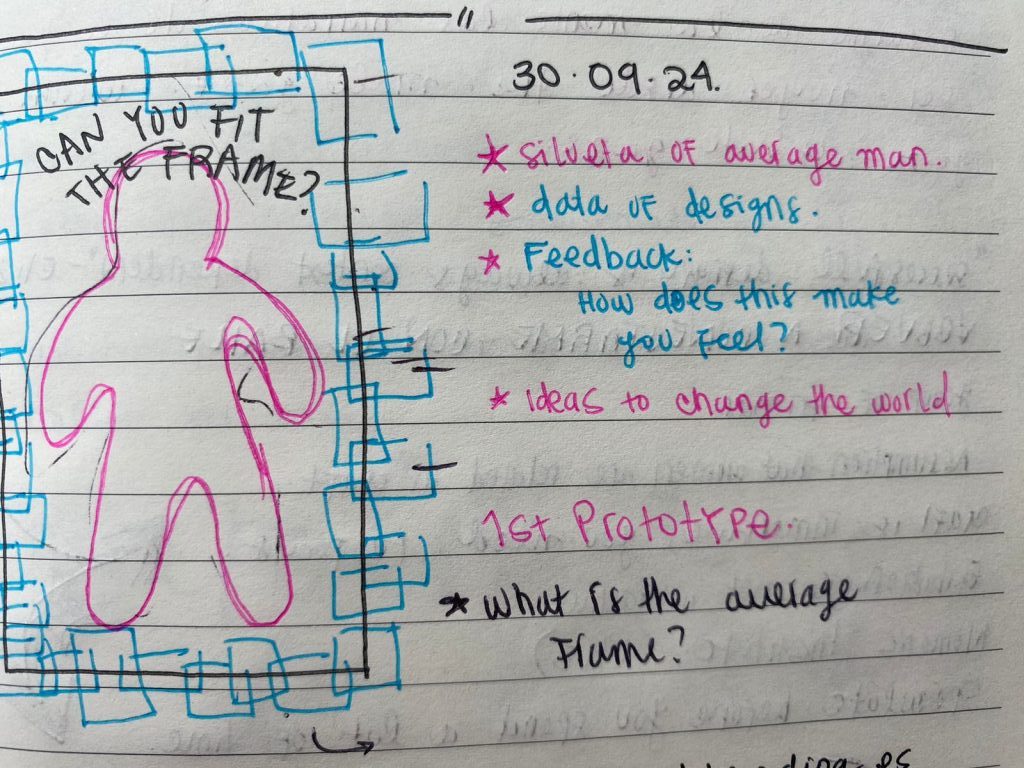Since the beginning of Unit 4, I’ve had the idea of creating a mirror with the silhouette of an average person, surrounded by data and information on design biases and the issues they create. I shared this concept in my tutorials and with Carolina, the MAAI student who helps with our creativity activities, and she suggested it could even work as an exhibition piece. I thought this mirror could really bring my research to life by allowing people to engage with it directly.
In the picture, my first prototype of what I thought it could be the mirror:

As deadlines approached, I started to panic about actually bringing the idea to reality, realizing I needed to figure out the logistics quickly. I asked Zuleika for help, and she challenged me to think about making the installation more interactive. She asked, “What do you want people to do with this information? How can you give them agency in this subject?”
Later that day, I presented in our Dragon’s Den session. I felt unexpectedly confident, even though I was nervous, since I’ve been discussing this topic all year. Emily, one of the dragons, was especially impressed by the branding for “Flag the Gap,” saying, “Your project is about making the invisible visible.” That completely resonated with me and she even suggested to make another intervention about using red flags in the space, and I think that could be an activity for the exhibition. I saw it as a chance to bring again Flag the gap and that excited me so much!
While reviewing my notes for my reflective journal, I rediscovered a metaphor I’d noted earlier—giving people glasses that allow them to see the red flags we often ignore. This is a random drawing I made after a tutorial and it says “that allows me to identify new realities”.

Concidently, a random post made my bring click: as a millennial, Twilight was a big part of my teenage years, and the simple trick of looking through blue plastic to see a “Twilight world” seemed so smart. Could I create a similar effect for people to see the “red flags” we miss due to lack of awareness?
This led me to explore anaglyph effects, using two colors. I think this concept could work well, but I still need to figure out the practical side. My idea now is to create a room where people can wear glasses or use another device to reveal hidden red flags around them. Here are some referents I found on internet:

Zuleika thought it was a clever direction but pointed out some important aspects to clarify:
- Think through the symbolism of using blue and red—how does it tie into my message?
- Define a clear call to action.
- Make the installation affordable and portable.
Interestingly, I realized that during Unit 1, my first intervention touched on ignorance, referencing the red pill/blue pill choice from The Matrix. It’s funny how things connect in the end.